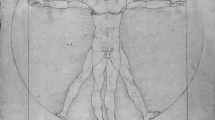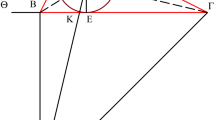Summary
Let us sum up the history of geometry from its beginnings in peg-and-cord constructions for circles and squares.
The circle and square were sacred figures and were studied by the priests for the same reason they studied the stars, namely, to know their gods better. The observation that the square on the diagonal of a rectangle was the sum of the squares on the sides found an immediate ritual application. Its elaboration in the sacrificial ritual gave it a dominant position in ancient thought and ensured its conservation for thousands of years. This initial elaboration took place well before 2000 B.C. By 2000 B.C., it was already old and had diffused parts of itself into Egypt and Babylonia (unless, indeed, one of these places was the homeland of the elaboration). These parts became the basis of a new development in these centers. The new, big development was the solution of the quadratic. A thousand years and more later, Greece inherited algebra from Babylonia, but its geometry has more of an Indian than a Babylonian look. It inherited geometric algebra, the problem of squaring the circle, the problem of expressing √2 rationally, and some notions of proof.
Similar content being viewed by others
Bibliography
Allcroft, A. H., The Circle and the Cross. London: 1927. 2 vols.
Allman, G. J., Greek Geometry from Thales to Euclid. Dublin: 1889.
Basham, A. L., J. Royal Asiatic Soc., 1959, p. 182.
Bell, E. T., The Development of Mathematics. New York: 1940.
Boas, F. The Kwakitul of Vancouver Island. (Mem. Amer. Mus. Nat. Hist., vol. 8: 2.) New York: 1908.
Brugsch, H., Hieroglyphisch-Demotisches Wörterbuch. Leipzig: 1868. Vol. 2.
Bürk, A., “Das Āpastamba-Śulba-Sūtra”, Zeit. d. Deutschen Morgenländischen Ges., vol. 55 (1901), vol. 56 (1902).
Burnell, A. C., Elements of South-Indian Palaeography. London: 1878.
Burnet, J., Greek Philosophy (Part I, Thales to Plato). London: 1928.
Cajori, F., A History of Mathematics. New York: 1929.
Cantor, M., “Gräko-indische Studien”, Zeit. f. Math. u. Phys. (Hist.-lit. Abt.), vol. 22 (1877).
—, “Über die älteste indische Mathematik”, Archiv d. Math. u. Phys., vol. 8 (1904).
—, Vorlesungen über Geschichte der Mathematik. Leipzig: 1907. Vol. 1.
Childe, V. Gordon, Progress and Archeology. London: 1945.
—, What Happened in History. New York: 1946.
—, Man Makes Himself. London: 1948.
Danielli, M., “The State Concept of Imerina”, Folk-Lore, vol. 61 (1950).
Dantzig, T., Number, the Language of Science. New York: 1954.
Encyclopaedia of Religion and Ethics. Edited by J. Hastings. Edinburgh: 1908–21.
Fletcher, A. C., & F. La Flesche, “The Omaha Tribe”, Twenty-seventh Ann. Rept., Bur. Amer. Ethn. (1908).
Heath, T. L., A History of Greek Mathematics. Oxford: 1921. 2 vols.
—, The Thirteen Books of Euclid's Elements. New York: 1956. 3 vols.
—, The Works of Archimedes. New York.
Hocart, A. M., Kingship. London: 1927.
Huber, P., “Zu einem mathematischen Keilschrifttext (VAT 8512)”, Isis, vol. 46 (1955).
Kaye, G. R., “The Source of Hindu Mathematics”, J. Royal Asiatic Soc., 1910.
—, Indian Mathematics. Calcutta: 1915.
Keith, A. B., Review of von Schroeder's Kathaka Samhita, J. Royal Asiatic Soc., 1910.
—, A History of Sanskrit Literature. Oxford: 1928.
Macdonell, A. A., A History of Sanskrit Literature. New York: 1900.
Mikami, Y., “The Development of Mathematics in China and Japan”, Abh. z. Ges. d. Math. Wiss., vol. 30 (1912).
Morley, S. G., The Ancient Maya. Stanford: 1946.
Nahm, M. C. (ed.), Selections from Early Greek Philosophy. New York: 1947.
Needham, J., Science and Civilization in China. Cambridge: 1959. 3 vols.
Neugebauer, O., “Zur Geschichte des Pythagoräischen Lehrsatzes”, Nach. v. d. Ges. d. Wiss. z. Gött. (Math.-Phys. Kl.), 1928.
—, “Die Geometrie der ägyptischen mathematischen Texte”, Quellen u. Studien z. Geschichte d. Math. Astr. u. Phys. (Abt. B), vol. 1 (1931).
—, Vorlesungen über Geschichte der Antiken Mathematischen Wissenschaften. Berlin: 1934.
—, The Exact Sciences in Antiquity. Princeton: 1952.
Neugebauer, O., & A. Sachs (eds.), Mathematical Cuneiform Texts. (Amer. Oriental Ser., vol. 29). New Haven: 1945.
Neugebauer, O., & W. Struve, “Über die Geometrie des Kreises in Babylonien”, Quellen u. Studien z. Geschichte d. Math. Astr. u. Phys. (Abt. B), vol. 1 (1929).
Nuttall, Z., The Fundamental Principles of Old and New World Civilizations. (Arch. and Ethn. Papers of the Peabody Museum, vol. 2) Cambridge: 1901.
Raglan, FitzRoy Richard Somerset, Lord, How Came Civilization? London: 1939.
—, Origins of Religion. London: 1949.
The Sacred Books of the East. Translated by various scholars. Edited by F. Max Müller. 50 vols. Oxford: 1879–1910.
The Sacred Laws of the Âryas as Taught in the Schools of Apastamba, Gautama, Vàsishtha and Baudhâyana. Translated by G. Bühler. (The Sacred Books of the East. Vols. 2, 14.) Oxford: 1882, 1897.
The Satapatha Brâhmana. Translated by J. Eggeling. (The Sacred Books of the East. Vols. 12, 26, 41, 43, 44.) Oxford: 1882–1900.
Sayce, A. H., “Babylonian Augury by Means of Geometrical Figures”, Trans. Soc. Biblical Arch., vol. 4 (1875).
Seidenberg, A., “Peg and Cord in Ancient Greek Geometry”, Scripta Mathematica, vol. 24 (1959).
—, “The Diffusion of Counting Practices”, Univ. Cal. Publ. Math., vol. 3 (1960).
Steck, M., Proklus Diadochus, Euklid-Kommentar. Halle: 1945.
Struik, D. J., A Concise History of Mathematics. New York: 1948.
The Taittiriya Samhita. Translated by A. B. Keith. Harvard Oriental Series. Vols. 18, 19. Cambridge: 1914.
Thibaut, G., “On the Śulvasútras”, J. Asiatic Soc. Bengal, vol. 44: 1 (1875).
—, “Śulvasútra of Baudhayana”, The Pandit, vol. 9 (1874), vol. vol. 10 (1875), n.s. 1 (1876–77).
—, “Kátyayána's Súlbapariśishta”, The Pandit, n. s. vol. 4 (1882).
—, Astronomie, Astrologie und Mathematik (in Grundriss d. Indo-Arischen Philologie u. Alter., vol. 3: 9). Strassburg: 1899.
van der Waerden, B. L., Science Awakening. Groningen: 1954. (2nd ed. 1961).
Waterman, T. T., “The Architecture of the American Indians”, Amer. Anth., vol. 29 (1927).
Weber, A., Revíew of L. von Schroeder's Pythagoras und die Inder, Literarisches Zentralblatt, vol. 35 (1884).
Weyer, E., Jr., Primitive People Today. Garden City: 1959.
Author information
Authors and Affiliations
Additional information
Communicated by B.L. van der Waerden
Rights and permissions
About this article
Cite this article
Seidenberg, A. The ritual origin of geometry. Arch. Hist. Exact Sci. 1, 488–527 (1961). https://doi.org/10.1007/BF00327767
Received:
Issue Date:
DOI: https://doi.org/10.1007/BF00327767




